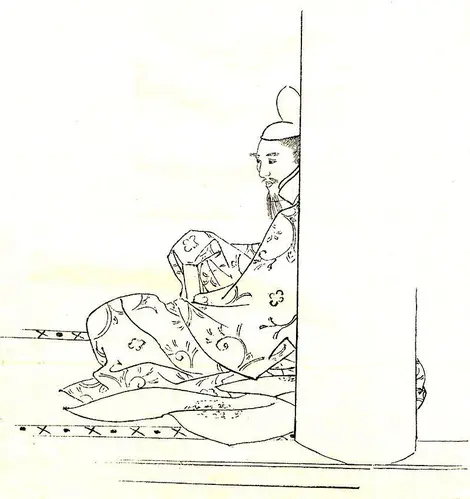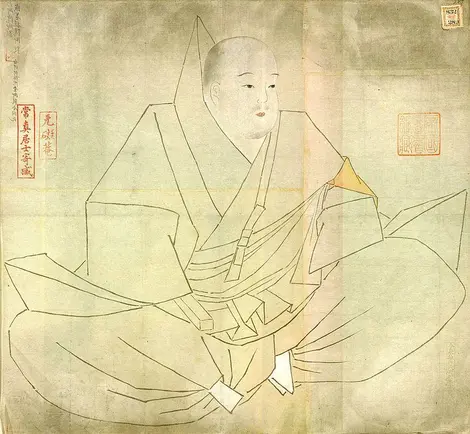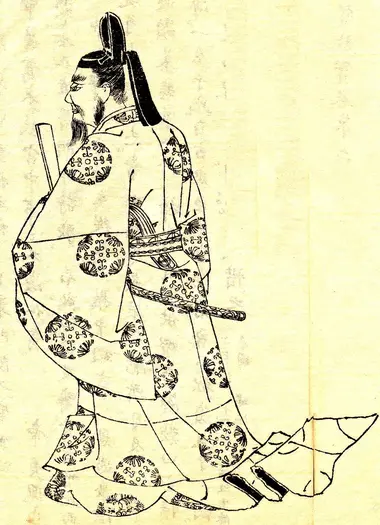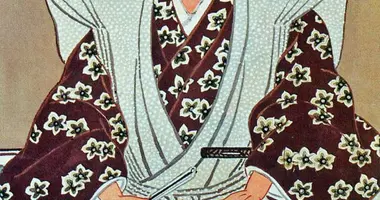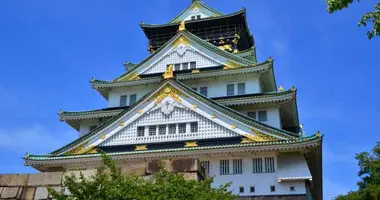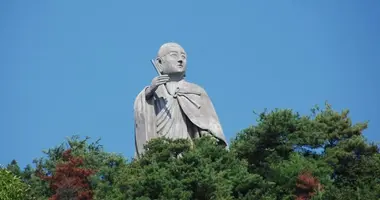The Fujiwara clan, a noble family at the heart of Japanese history
The Fujiwara clan is a Japanese aristocratic family that played a prominent role in Japanese history and politics for several centuries, notably during the Nara and Heian periods. This influential family gave numerous regents to the emperors and exerted domination over the government through strategic marriages with the imperial family. Discover the fascinating history of this powerful clan, from its rise to its decline.
The origins of the Fujiwara clan and its political rise in the Nara era
The Fujiwara clan traces its roots back to the 7th century, when its founding ancestor, Nakatomi no Kamatari, received the name "Fujiwara" from Emperor Tenji in 669 for his role in the Taika reform. This reform marked the centralization of the country along Chinese lines. Kamatari thus established his family firmly in the sphere of power.
It was under the impetus of Fujiwara no Fuhito (659-720), Kamatari's son, that the clan truly began its ascent. Fuhito held important positions in the courts of several emperors and made his daughters imperial wives and concubines. One of them, Kōmyō, became the first empress not to come from the imperial family. Fuhito's four sons founded the four main branches of the Fujiwara clan: Hokke (Northern), Nanke (Southern), Kyōke (Capital) and Shikike (Ceremonial).
The height of Fujiwara power during the Heian period
TheHeian period (794-1185) marked the apogee of Fujiwara power. Thanks to repeated matrimonial alliances with the imperial family, they succeeded in establishing a hereditary position as regent to the emperors, first for the minor rulers (sesshō) and then also for the adult emperors (kanpaku).
Many Fujiwara held key government and court positions. The clan reached the height of its influence under Fujiwara no Michinaga (966-1027), who was the grandfather of three emperors and the father of six empresses. The Fujiwara were the real "power behind the throne", effectively ruling the country for almost two centuries through their control of the young emperors and the court.
The gradual decline of the clan's influence from the reign of emperor Go-Sanjō onwards
The Fujiwara's undivided power began to crumble from the reign of Emperor Go-Sanjō (r. 1068-1073). The first emperor in 170 years not to have a Fujiwara mother, he set about re-establishing imperial authority through reforms aimed at reducing the hold of the regents.
His son Shirakawa continued this policy of emancipation. By abdicating to become retired emperor (insei), he succeeded in regaining control of the government and keeping the Fujiwara at bay. Although weakened, the Fujiwara attempted to regain their influence during the Hōgen (1156) and Heiji (1160) rebellions, but the Genpei War (1180-1185) sounded the death knell of their hegemony with the advent of the Taira and Minamoto warrior clans, followed by the establishment of the first bakufu (military government) in Kamakura.
The different branches of the Fujiwara family after the 13th century
Despite the loss of their political power, the Fujiwara remained an important aristocratic family. In the 13th century, the Hokke branch split into five lineages: Konoe, Takatsukasa, Kujō, Nijō and Ichijō. These continue to share the honorary titles of regent in the bakufu system.
The Northern Fujiwara (Ōshū Fujiwara), meanwhile, established a powerful lordship at Hiraizumi, in present-day Iwate prefecture. They prospered there until their annihilation by the forces of Minamoto no Yoritomo in 1189.
Although deprived of real power, the Fujiwara's descendants continued to hold positions as ministers, advisors and ceremonial regents to the emperors right up to the present day. The title of sesshō was last held by Konoe Fumimaro in 1921 for Emperor Shōwa.
The role of the Fujiwara Hokke and their occult forces in the Jujutsu Kaisen universe
In the Jujutsu Kaisen manga, the Fujiwara clan appears through its Hokke branch, which employs powerful exorcists (jujutsushi) charged with fighting curses. The clan has two occult forces: the Battalion of the Stars, which was wiped out by Ryōmen Sukuna, and the Five Generals of Emptiness, including Uro and Yorozu.
The Fujiwara clan is historically linked in the series to the Three Great Avenging Spirits, a curse issued from great figures who died in tragic circumstances during the Heian period due to conflicts with the clan: Sugawara no Michizane, Taira no Masakado and Emperor Sutoku. This history and the Fujiwara clan's role in the occult universe suggest a possible return of this family to history.
Famous members of the Fujiwara clan who left their mark on Japanese history
- Fujiwara no Kamatari (614-669): Founding ancestor of the clan, architect of the Taika reform in 645.
- Fujiwara no Fuhito (659-720): Son of Kamatari, he established the family's power at court through his four sons and the marriage of his daughters to emperors.
- Fujiwara no Yoshifusa (804-872): First Fujiwara to bear the title of sesshō regent in 866, paving the way for clan domination.
- Fujiwara no Michinaga (966-1027): A central figure in Fujiwara power, he was the grandfather of three emperors and the father of six empresses. His influence was such that he is considered the true ruler of Japan at the time.
- Fujiwara no Toshinari no Musume (1171-1251), also known as Nijō-in no Sanuki: Poetess and author of diaries, daughter-in-law of the retired emperor Go-Toba, she was one of the great literary and feminine figures of her time.
- Konoe Fumimaro (1891-1945): Statesman of the Shōwa era, he was Prime Minister of Japan three times between 1937 and 1941.
The Fujiwara clan's lasting legacy in Japanese culture and society
Despite their political decline, the Fujiwara clan left a deep and lasting imprint on Japanesehistory and culture. Their influence had a lasting effect on the political and social structures of the imperial court, laying the foundations for an aristocratic model that lasted until the Meiji era.
The period of Fujiwara domination was also the golden age of court culture, giving rise to literary masterpieces such as Murasaki Shikibu's Dit du Genji and Sei Shōnagon's Notes de chevet. Waka poetry underwent remarkable development under their patronage, with great imperial anthologies such as the Kokin Wakashū. The refined, elegant aesthetic that flourished then remained an ideal for subsequent centuries.
In the arts, the Heian and Fujiwara periods saw the emergence of typically Japanese artistic forms such as yamato-e painting and the architecture of shinden-zukuri, palaces and villas adapted to the tastes of the aristocracy. The lifestyle and ceremonies of the imperial court developed during this period became models that continued to be observed well into the modern era.
Finally, the Fujiwara'sreligious influence was also considerable. Great patrons of Buddhism, they encouraged the growth of the esoteric Shingon school founded by Kūkai, as well as the Pure Land. They established some of the country's most important temples, such as the Kōfuku-ji in Nara and the Byōdō-in in Uji. Many of them remain cultural treasures and major tourist attractions, bearing witness to the past grandeur of this illustrious lineage.



